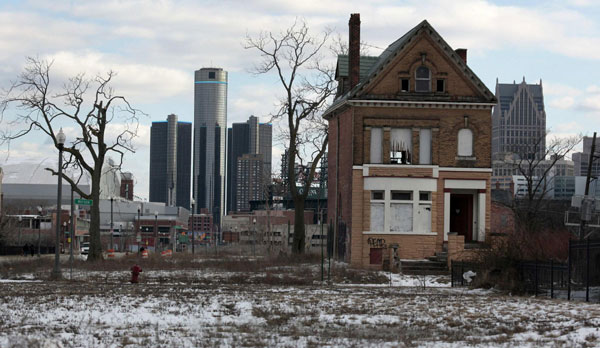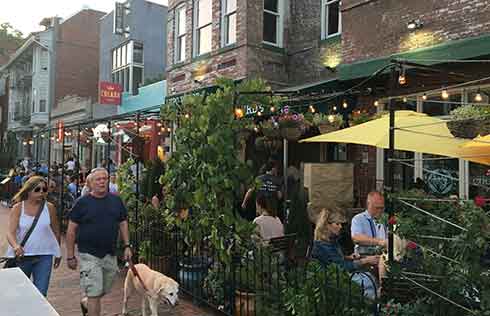Detroit faces uncertain future in bankruptcy
 |
|
A vacant, boarded up house is seen in the once thriving Brush Park neighbourhood with the downtown Detroit skyline behind it in Detroit, Michigan in this March 3, 2013 file photo. Detroit filed the largest-ever municipal bankruptcy in US history on July 18, 2013, marking a new low for a city that was the cradle of the US automotive industry and setting the stage for a costly court battle with creditors. [Photo/Agencies] |
Detroit's economic struggles have resulted in a deterioration of city life. The murder rate is the highest in nearly 40 years, only a third of its ambulances were in service in the first quarter of 2013 and nearly 78,000 abandoned buildings create "additional public safety problems," Michigan's Republican governor, Rick Snyder, wrote in a letter accompanying the filing.
Residents have also had to cope with a breakdown of services. Forty percent of street lights were non-functional in the first three months of this year, while the police took an average of 58 minutes to respond to emergency calls, more than five times the national average. The city government has also been plagued by mismanagement and political corruption.
"Detroit has a lot to offer, but we need a clean sweep of politicians," said Joanna Maslach, 30, a restaurant manager. "There's still too much corruption here. It's too dysfunctional."
Jim Fields, 37, who recently moved to a downtown loft from the suburbs, is one who believes the city is poised for a comeback. He is among a growing number of professionals moving to historic buildings converted into loft spaces.
"Bankruptcy hits the reset button," the software engineer said. "It's a golden opportunity to make this city right again. I'm very hopeful."





















